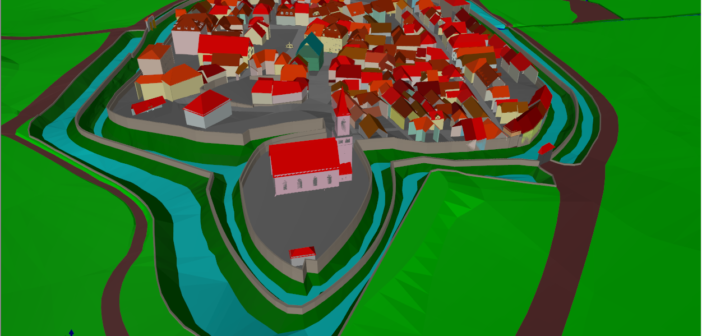LISTECH, a leader in the development of innovative and internationally successful software for land surveying, civil engineering and geospatial industries and a Hexagon Geosystems brand, released a new generation of geospatial software, LISTECH Neo.
To find out what’s new with this expanding modular portfolio, the Reporter caught up with Andrej Mocicka, LISTECH business development manager, for the scoop.
LISTECH Neo was released earlier this year. What’s new now?
Mocicka: There are many benefits to Neo, including the ability to easily design and tailor attributes. You can create or import all available attributes automatically from GIS, BIM, CAD, Leica DBX and a host of other systems. Neo will automatically populate and increment the attribute values as the imported objects are created. Neo is the data exchange tool of choice, seamlessly exchanging data between office systems and also with field sensors. Rigorous geodetic computations and editing functionality allow information collected from all sources to be customised to the user’s needs. Neo bridges the gap between the attribute rich world of GIS and BIM systems with field instruments for setout and as-built surveys. Images captured from Leica Geosystems total stations can be used for direct measurement by creating points, lines and polygons. With unique abilities, such as automatically displaying only overlapping images that can be used for object computations, epipolar lines providing for easy point matching, residuals being displayed to ensure positional accuracy and the indication of the calculated best fit location, Neo ensures images are no longer just an images but a versatile survey measurement tool.
What can users expect in the new interface of LISTECH Neo?
Mocicka: Neo’s modern interface provides an enjoyable experience by combining visual reality with extremely fast graphics in a 2D or 3D working environment, where users can streamline their workflow and increase productivity. With a customisable ribbon menu and quick-access tool bar, the user experience can be tailored for optimum ease of use. Neo is an expanding portfolio of modules, so you can invest in the modules that are required today and then add more later as the need arises.
What applications can LISTECH Neo support?
Mocicka: There are many applications for Neo, especially where the user needs to visualise, work with and exchange data with a variety of sources in the office or on-site. Work seamlessly with popular applica-tions, including BIM for the field set-out and as-built surveys, GIS for collection and maintenance of assets, surveys for feature, land title (cadastral) and engineering. Use images for façade surveys, asset inspections or for surveys with time or safety constraints.
How versatile is LISTECH Neo?
Mocicka: Increasingly the role of spatial professionals is to ensure the data is readily available, correct and in the required formats. Neo is a global software, with a database that supports any language, allowing work to be on a plane or geodetic coordinate systems using known ellipsoids, projections, transformations and geoid models. Display options, annotation styles and reports are configurable, allowing local presentation requirements to be met. Neo projects are template based, so new projects with the required customisation and attribute definitions are created simply by selecting the appropriate template.
What are the biggest benefits for the user?
Mocicka: Certainly increased productivity and the simplicity of use are great benefits of Neo, but you can’t dismiss the overall pleasant experience when using this software. For easy field survey reduction and quality assurance, Neo’s integrated measurement database maintains inherent measurement-object relationships. The Image Xtract module provides the ability to now capture images quickly in the field and continue your survey in the office. LISTECH Neo is designed to be the data interface tool of choice within a 3D working environment. Extensive user definable attribute support enables interfacing with many systems, including GIS and BIM plus others.
Any last thoughts?
Mocicka: In summary, spatial professionals need to achieve more productivity, work with increasingly larger data sets generated from more sophisticated field equipment, including traditional survey instruments, modern scanners, UAV and LiDAR. Increasingly their roles include data management, ensuring that data is correct and available in the required formats to support the needs of their clients. LISTECH understands this, and has developed Neo to meet these needs today and into the future.

Andrej Mocicka is a former Surveyor turned Business Development Manager for LISTECH. He holds a degree in Surveying Sciences from RMIT University in Melbourne, Australia.














